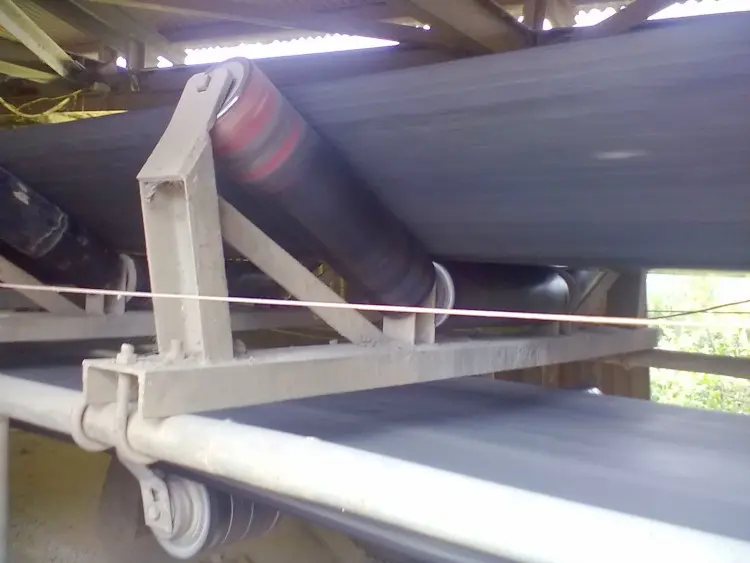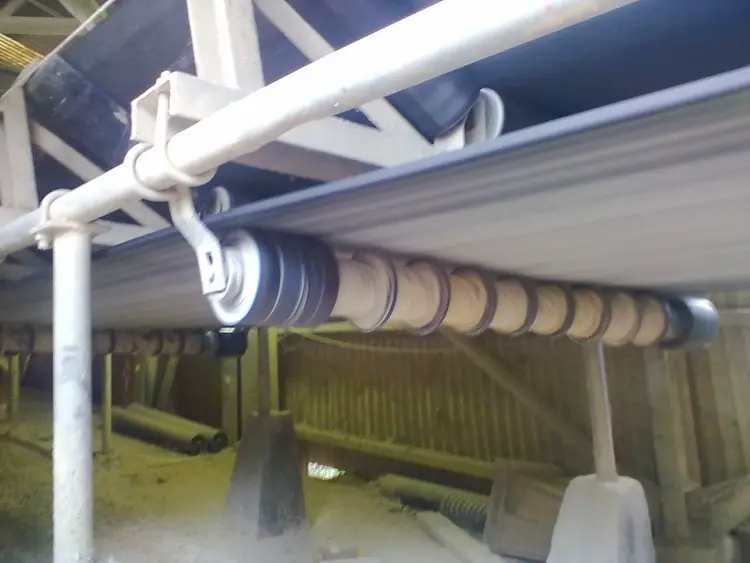Time:2024-12-31 16:58:49 Number of Clicks:
Belt conveyors play an indispensable role in industrial material handling, with rollers being a critical component that ensures safe and stable operation. The wear of rollers not only shortens their service life but also damages conveyor belts, leading to reduced efficiency and economic losses. This article analyzes the causes of roller wear and provides effective solutions to enhance the overall performance and economic efficiency of conveyor systems.

The main types of rollers in belt conveyors are as follows:
- Rollers Installed on the Upper Branch of the Conveyor:These include upper idlers, upper roller groups, and rollers that carry the material and conveyor belt.
- Rollers Installed on the Lower Branch of the Conveyor:These rollers support the return belt.
- Rollers Installed in the Loading Area:These reduce the impact of materials on the conveyor belt.
- Adjustable Rollers and Transition Roller Groups:These include combinations of the above types.
- Ordinary Troughing Rollers:Usually have trough angles less than 35° and are used when the conveyor’s inclination angle is below 18°. If the conveyor is designed with an inclination greater than 16°, trough angles of 45° or 60°, U-shaped, or circular rollers may be used.
- V-shaped Roller Groups:Typically have trough angles set at 10° for small belt widths or 5° for larger ones.
- Forward-tilting Rollers:These have forward angles usually less than or equal to 1.5°. They are mainly used for belt alignment but should not exceed 3° to avoid excessive friction and resistance.
Roller wear is a common issue in conveyor systems. The following are specific forms and causes of wear:
- Roller Shell Wear:Excessive friction between the belt and roller surface, or misalignment, causes shell wear or breakage.
- Roller Deformation:Uneven force or insufficient design strength leads to bending deformation and damage to the shell or bearing.
- Bearing Failure:Poor lubrication, inadequate sealing, or improper assembly result in bearing malfunction or failure.
◆ Causes of Roller Shell Wear
- Conveyor belt misalignment generates friction and uneven force on the shell surface.
- Harsh working conditions lead to direct abrasion between roller shells and hard materials like coal or rocks.
◆ Causes of Roller Deformation
- Improper design leads to localized stress concentration.
- Roller models and specifications are not selected based on the conveyor’s load and operating environment.
◆ Causes of Bearing Damage
- Inadequate sealing structures allow contamination of the lubricant, leading to insufficient lubrication.
- Use of substandard lubricants or improper grease filling.
- Vibrations or resonance due to poor structural design accelerate bearing wear.
Please contact us using the info below if you have any questions about How to Reduce Belt Conveyor Roller Wear and Countermeasures
- https://www.zoomry-ind.com
- +86 131-6401-6717

During conveyor design, factors such as material load and environmental conditions should be considered:
- Increase the number of rollers in convex curve sections, reducing spacing to half the standard interval to minimize stress on individual rollers.
- Avoid resonance zones by adjusting roller bracket rigidity or incorporating localized damping measures.
- Ensure roller speed complies with national standards: rated speed ≤500 r/min, maximum speed ≤600 r/min, with a service life of no less than 30,000 hours.
- Enhance bearing sealing structures to improve reliability while maintaining rotation resistance within standard limits.
Manufacturing processes should adhere to the following practices:
- Use high-precision fixtures during roller shell machining to ensure radial runout accuracy.
- Employ specialized welding machines to produce continuous and uniform welds, avoiding weak or incomplete welds.
- Strictly follow process standards during bearing assembly to ensure smooth fitting between the inner and outer rings, minimizing unnecessary resistance.
- Lubricating grease should fill 2/3 of the bearing space, with high-quality lithium-based grease preferred.
Proper maintenance is crucial for prolonging roller lifespan:
- Regularly clean the conveyor work area to maintain suitable temperature, humidity, and dust levels.
- Ensure smooth contact between rollers and the conveyor belt, free of jamming or stalling.
- Periodically inspect the rollers’ rotational state and promptly replace any worn or faulty parts.
- Monitor the conveyor belt for misalignment and address issues to avoid additional roller wear.
Rollers are a vital component of belt conveyors, and their service life is influenced by factors such as design, manufacturing, and maintenance. By optimizing roller design, improving manufacturing accuracy, and enhancing maintenance practices, roller wear issues can be effectively reduced. Enterprises should develop tailored maintenance plans based on specific working conditions to ensure long-term equipment stability, reduce operating costs, and extend equipment lifespan.
Copyright © 2002-2024 Zoomry Group Company Limited